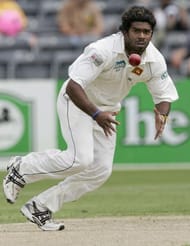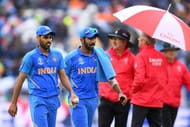
The other day Lasith Malinga took 4 wickets in 4 balls in the third T20I against New Zealand at Pallekele. All his wickets were of top-order batsmen. While two of those batsmen were cleaned up by his deadly yorkers, the other two were done in by his change in pace.
During his 5-wicket haul, Malinga became the first bowler to reach 100 wickets in T20I cricket. He is now the only bowler with at least 100 international wickets in all three formats of the game.
Malinga’s magic in white-ball cricket, more particularly in T20Is, brings us to the discussion of a paradox in cricket – why could a successful T20I bowler like Malinga not repeat his wicket-taking feat in Tests?
Don't get me wrong; Malinga is in no way a bad bowler in the Test format. But he is just not world-class.
Why could a bowler who regularly took 3 or more wickets in 4 overs not expand the damage in the same magnitude in Tests? When a bowler takes a handful of wickets in just 4 overs, he is expected to run through the opposition in a Test match with an attacking field and infinite overs at his disposal. But that doesn't normally happen.
Sure, there have been some odd occasions like the second innings of the first Test between India and West Indies at Antigua, when Jasprit Bumrah took 5 wickets in 5 overs including a hat-trick. But those are few and far between.
Malinga has the most number of hat-tricks in white-ball cricket; he has two in T20Is and three in ODIs. Malinga has taken 5 or more wickets in T20Is on two occasions, having sent down 274 overs in total.
However, in Tests, he has taken 5 or more wickets on just three occasions after delivering 868 overs. In T20Is, Malinga takes a wicket off every 15.7 balls whereas in Test cricket, he has to wait for 51.50 balls to achieve that feat.
There may be several logical reasons that could be attributed to the decline in Malinga's strike rate in Test matches. The first and foremost reason is that batsmen adopt a more cautious approach in Tests.
Unlike in T20Is, the batsmen are never under scoreboard pressure in the longer format. They look to grind the opposition bowlers into submission, playing at their own pace. As a result, we witness more roller-coaster rides and "tail-wagging" in Test matches.
An accurate bowler like Malinga finds it difficult to maintain his consistency in Test matches over extended spells. His fitness levels also have a lot to do with this phenomenon. Hence, Malinga is not as unplayable in Test matches as in T20Is.

In Tests, the term "temperament" is often associated with batsmen. But it is a precious commodity for the bowler as well.
Besides, even a yorker specialist like Malinga has had his problems in nailing yorkers with the red ball in Test cricket.
The paradox within a paradox is that the wickets provided all over the world for T20I are normally batsman-friendly to ensure entertainment to the viewers. While Malinga has been consistently successful on batsman-friendly wickets, he has not been as successful in Test matches where there is expected to be some juice in the wicket in the first session followed by deterioration to suit the bowlers from the fourth day.
The paradox could be explained by the fact that the wear and tear on sub-continental wickets normally assist the spinners more than the fast bowlers.
Another problem with this comparison is that in T20 cricket, the performance of a player in franchise cricket takes center stage and is often confused with his performance in T20 internationals.
A typical example is the case of MS Dhoni in IPL and in T20Is. Dhoni is not the same impact player in T20Is as he in IPL.
Sunil Narine is another bowler like Malinga who has had a lot of success in T20Is but failed to justify his presence in Test cricket.
There are other similar bowlers in international cricket like Rashid Khan, Mustafizur Rahman, Andrew Tye, Imran Tahir, Chris Morris and Samuel Badree who are branded as good T20I bowlers. These players have not been able to make the same impact in Test cricket.

There are a lot of exceptions to this general rule. Bowlers like Jasprit Bumrah, Trent Boult, Mitchell Starc, Bhuvneshwar Kumar, Ravichandran Ashwin, Kagiso Rabada and Shakib Al Hasan have proved that they are equally effective in Tests as in T20Is. These bowlers are well-suited for all three formats of the game.
To sum up, it would be too much to expect a champion T20I bowler like a Malinga or a Narine to transfer their wicket-taking abilities in the same magnitude into Test cricket. The very format of the game and the defensive mindset of the batsmen makes it that much more difficult to succeed in Test cricket.
Also see - Live cricket score
Looking for fast live cricket scores? Download CricRocket and get fast score updates, top-notch commentary in-depth match stats & much more! 🚀☄️
